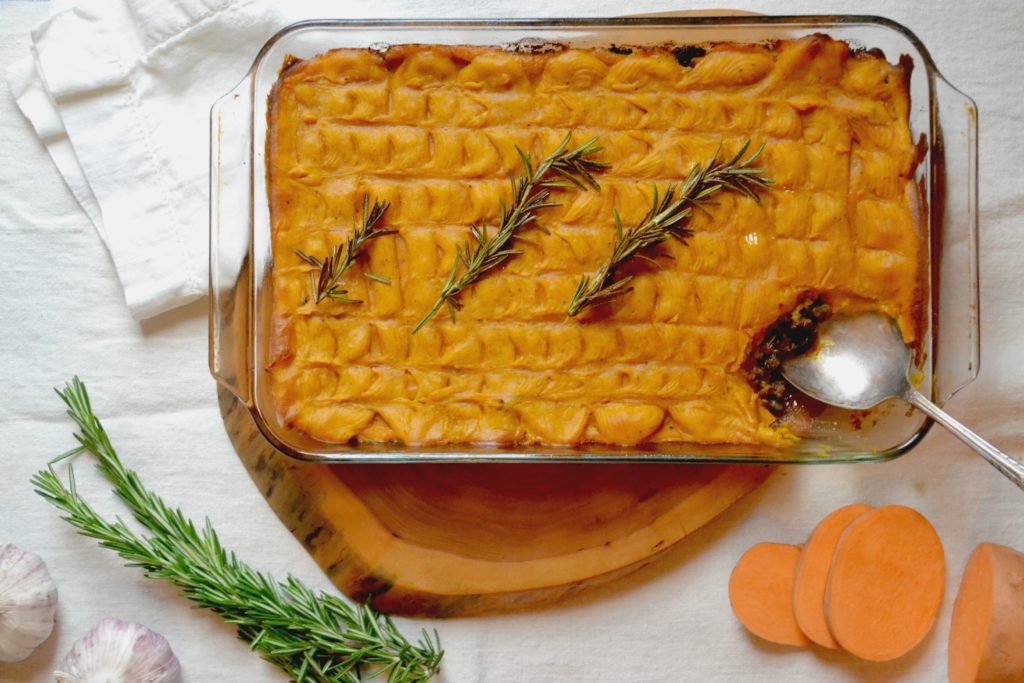
The bison, also known as buffalo, is a hulking, prehistoric animal, once a primary resource for the Native Plains Indians of North America, who used nearly every part of the beast for food, tools, clothing, and more. In the late 1800s, due to negligent hunting practices on the part of European settlers, bison herds neared extinction. Thanks to protection and careful breeding, bison is no longer considered to be endangered, and in fact, is expected to support growing consumer demand for its meat. Although bison meat consumption still isn’t mainstream, its popularity is growing. Bison is naturally raised and its meat has been compared to a leaner, yet sweeter and richer-tasting version of beef. Nutritionally, bison is an excellent source of iron, B12, and zinc, and a good source of niacin (vitamin B3), selenium, and phosphorus.
The bison, also known as a buffalo, is a beautiful, hulking, prehistoric animal with a large woolly head set with horns, and a tapered, muscular body. It is also a type of red meat.
Bison were one of the most important animals to the Native Plains Indians of North America, who used nearly every part of the beast for food, tools, clothing, crafting and repair materials, and for accessories used in religious ceremonies.
For a good part of the 1800s, North America experienced a bison “gold rush”. Bison were considered to be almost limitless in number and European settlers hunted them with abandon for their hides, bones, tongues (which were considered a culinary delicacy), and little else.
By the 1890s, bison were approaching extinction.
Thankfully, attempts to revive the bison population have been successful. Today, these animals are no longer considered endangered, and are expected to be able to sustain a growing market for bison meat.
Bison has been slow to catch on in the mainstream culinary world, and although its popularity is currently spreading, bison consumption still falls well below beef consumption. In North America, it is estimated that an individual’s average annual consumption of beef is about 55 lbs, compared to a mere half pound of bison.
However, the demand for naturally raised, lean, grass-fed meat has grown dramatically in recent years, and wilder types of red meat such as venison, elk, and bison are increasingly more available on menus and in grocery stores.
Bison are well-adapted to cooler climates, and about half of the world’s population of bison reside in Canada.
Appearance-wise, bison looks a lot like beef. However, unlike beef, bison meat is typically very lean, and so will be free of the fat marbling that many cuts of beef display.
Raw bison is deep red in color, sometimes with a slight brown or purple tinge. Depending on the method and the degree of cooking, cooked bison will be a deep caramelized brown.
Bison tastes similar to beef, although with a slightly richer, sweeter flavor. Because it tends to have a lower fat content than beef, its texture can be slightly coarser, especially if overcooked.
Bison may be found in a variety of cuts and forms. Most commonly, bison will be sold ground, in patties, in stewing chunks, or as steaks.
Three ounces of cooked, ground bison (about 85g) has 152 calories, 21.6g of protein, 7.3g of fat, and no measurable carbohydrates, fiber, or sugar. Bison is an excellent source of iron, vitamin B12, and zinc, and a good source of niacin (vitamin B3), selenium, and phosphorus.
Bison has not reached mainstream popularity, so in order to find it, you may have shop at larger, more progressive grocery stores or specialty butcher shops.
Most commonly, bison is sold ground, in patties, in stewing chunks, or as steaks. However, like beef, there are many cuts available, such as prime rib, osso bucco, brisket, and others.
The tenderest cuts come from the center of the animal, such as the rib, the short loin, and the sirloin. Flank, chuck, and brisket cuts are the toughest and are best suited to slow-cooking methods in order to tenderize the meat.
When selecting your meat, after checking the expiration date, examine the color of the meat. Fresh meat should appear bright and red. Meat that is excessively brown or dull looking is probably not optimally fresh.
If purchasing fresh, unfrozen meat, bison can be stored in the fridge in a separate disposable plastic bag (in order to prevent leakage and contamination) for three to five days. Alternatively, fresh bison meat can also be frozen for up to a year.
Once cooked, bison can stay fresh in the fridge in an airtight container for three to four days, or frozen for three to six months.
If preparing bison from frozen, the safest way to thaw it out in the fridge. Place your package of meat in a separate disposable plastic bag (in order to prevent leakage and contamination) and leave it in the fridge, where it will likely thaw out within a day or two, depending on the size and cut of the meat.
Because bison is a relatively lean meat and can be prone to toughness if overcooked, follow the “low and slow” method when cooking it. Additionally, moist cooking methods such as braising lend themselves well to bison, and can help promote tenderness and juiciness to roasts and steaks.
Ground bison is probably the easiest and fastest cut to cook.
To cook ground bison, heat up a tablespoon or two of olive oil over medium heat in a large skillet. Add the (thawed) ground bison, stirring frequently to prevent clumping. Cook until there are no visible pink pieces left, and the bison has turned a lovely caramelized brown. Season with salt and other desired herbs and spices. Serve in tacos, add to chili or tomato sauce, or mix it up in a hash or a stir-fry.

A twist on a homey, hearty favorite! Bison replaces the traditional beef filling for a more robust savory experience, and sweet potatoes take the place of regular potatoes for the topping, adding color and nutrition.
Prep Time: 25 minutes Cook Time: 70 minutes Yield: 8 servings
For the Bison Base:
In a large sauté pan, heat olive oil over medium-high heat. Add onions and garlic, and cook until onions are translucent and fragrant, about 5-7 minutes.
Add celery and mushrooms, and cook for another 10 minutes, stirring occasionally, until vegetables have softened.
Once vegetables have cooked, add bison, balsamic vinegar, and herbs. Using a spatula, break up the bison as it cooks and mix in the vegetable mixture. Cook for another 10 minutes or so, until the meat has browned. Set aside for later, when you are ready to assemble the pie.
For the Sweet Potato Topping:
Once sweet potatoes are cooked, allow them to cool, and then place them in a blender or food processor. Add butter, salt, and pepper, and process until smooth.
In a greased casserole dish, layer the ground bison mixture on the bottom, spreading it out evenly. Then pour the sweet potato mixture over top and spread this layer evenly, using a spatula to smooth it and, if desired, make a design on the surface of the puré.
Place the casserole dish in a preheated 400 degree Fahrenheit oven, and bake for 30-40 minutes, or until edges and peaks begin browning.
Once the pie is cooked, remove from the oven, allow to cool slightly, and then serve.
Precision Nutrition’s Encyclopedia of Food expands every single month as we highlight new foods and showcase beautiful food photography. If you’d like to stay up to date, simply click this link. From there, we’ll send you a FREE copy of our recipe book. We’ll also let you know when new and delicious foods are added to the site.
The bison, also known as buffalo, is a hulking, prehistoric animal, once a primary resource for the Native Plains Indians of North America, who used nearly every part of the beast for food, tools, clothing, and more. In the late 1800s, due to negligent hunting practices on the part of European settlers, bison herds neared extinction. Thanks to protection and careful breeding, bison is no longer considered to be endangered, and in fact, is expected to support growing consumer demand for its meat. Although bison meat consumption still isn’t mainstream, its popularity is growing. Bison is naturally raised and its meat has been compared to a leaner, yet sweeter and richer-tasting version of beef. Nutritionally, bison is an excellent source of iron, B12, and zinc, and a good source of niacin (vitamin B3), selenium, and phosphorus.